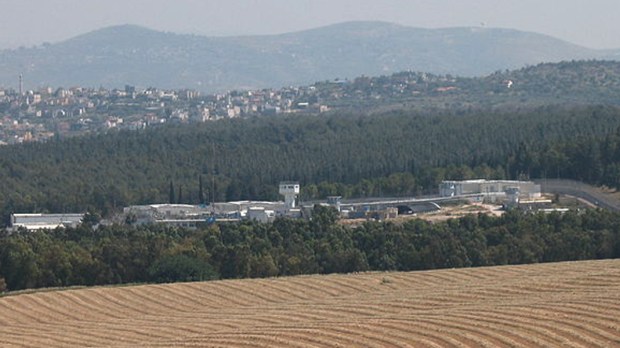Lenten Campaign 2025
This content is free of charge, as are all our articles.
Support us with a donation that is tax-deductible and enable us to continue to reach millions of readers.
What may be the oldest Christian church in the world lies beneath a prison in northern Israel, built by the British in the 1940s. Today, Israeli officials announced, the Megiddo Prison will be evacuated to become an archaeological park, according to an article at Haaretz.com.
The inmates will be relocated to a new prison that complies with Israel’s newly adopted standards allowing space per inmate equal to the standards set in European countries.
Archaeologists discovered the ruins of the early Christian prayer house during an excavation that began in 2003, in which the prisoners themselves took part in the digging. One inmate was credited with discovering a well-preserved mosaic, dating back to the year 230, which named Jesus as a deity.
The mosaic bears the inscription, in ancient Greek: “The god-loving Akeptous has offered the table to God Jesus Christ as a memorial.”
According to the article in Haaretz.com, Akeptous is thought to be a woman who paid for the table, which functioned as the altar for the Eucharist.
A Jew, an Early Christian and a Roman Meet in Archaeological Park to Be Built on Evacuated Prison: https://t.co/b98mSkwQds Dated to the year 230, very early in the Christian era, the mosaic bears three inscriptions in ancient Greek – one explicitly calling Jesus a deity. pic.twitter.com/9R1VGd2EJ6
— Founders Church (@FoundersChurch1) March 3, 2018
The mosaic floor, which was embellished with the Christian symbol of a fish, was part of a home, rather than a church or basilica. Churches as we know them were only built after Holy Roman Emperor Constantine embraced Christianity almost a century later.
According to Dr. Yotam Tepper of the University of Haifa, Romans probably lived in the house, but the room that housed the mosaic was likely a prayer hall.
Some of the most extraordinary finds within the Megiddo Prison grounds were made by prisonershttps://t.co/5ahsig2c14
— Haaretz.com (@haaretzcom) March 3, 2018
The historic site also includes the remains of an ancient Jewish village and a Roman army base. It’s the discovery of the Roman military base that has historians rethinking what they know about the Roman attitude toward early Christians.
The encampment, which lies outside of Jerusalem and had been the base of the Legio VI Ferrata or Sixth Legion Ironclads, was home to about 5,000 soldiers.
“We think some of the Roman soldiers at Legio were Christian,” Dr. Tepper told Haaretz.
The name of the donor of the mosaic was a Roman centurion named Gainus who was also called “Porophrius, our brother.” For Roman soldiers to be openly Christian contradicts the conventional wisdom that assumes that early Christians were persecuted.
“Here the Romans had Christian officers,” Tepper explains. “The persecution may have been exaggerated later in the telling. But certainly the tales do not reflect the complexity of the reality, which is that there were Christians in the Roman army.”
Once the archaeological park opens to the public, visitors will be able to visit the early Christian house of worship, the nearby ruins of the 4th-century Byzantine city of Maximianopolis, the remains of the Roman military base and an ancient Jewish village, all currently under one barbed-wire enclosed roof.

